1. Pascal Mercier – Night Train to Lisbon
Location: Kirchenfeld Bridge, Bern, Switzerland, and Lisbon
Cost: none
One of my favorite walks in Bern is to slowly walk down the covered Kramgasse and then the Gerechtigkeitsgasse. Just before the bridge over the Aare that leads to the famous bear pit, which fortunately is no longer a bear pit, you descend to the left of the road to the banks of the Aare. You can follow the road, but you can also take a covered staircase. Once you reach the bottom, you walk past houses that occasionally suffer from extremely high water levels in the Aare, which flows quite wildly here. Eventually, you will arrive at a road directly along the Aare and walk down to the Kirchenfeldbrücke. This bridge was opened in 1883, initially only for horse traffic and pedestrians. Now cars and trams drive over it, so the bridge has been reinforced several times. The bridge is 37 meters high.

It is not easy to see, but there are nets on the sides of the bridge to prevent people from jumping off.
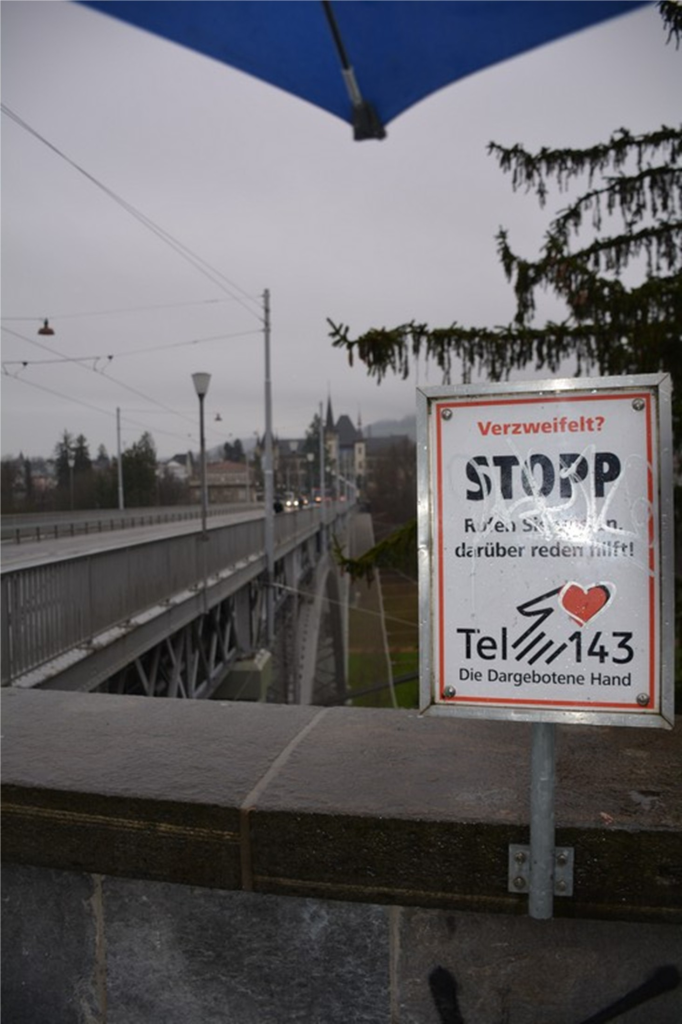
And that possibility of suicide is the start of Pascal Mercier’s world-famous novel, Night Train to Lisbon. The main character is the eccentric classical languages teacher Raimund Gregorius, 59 years old.
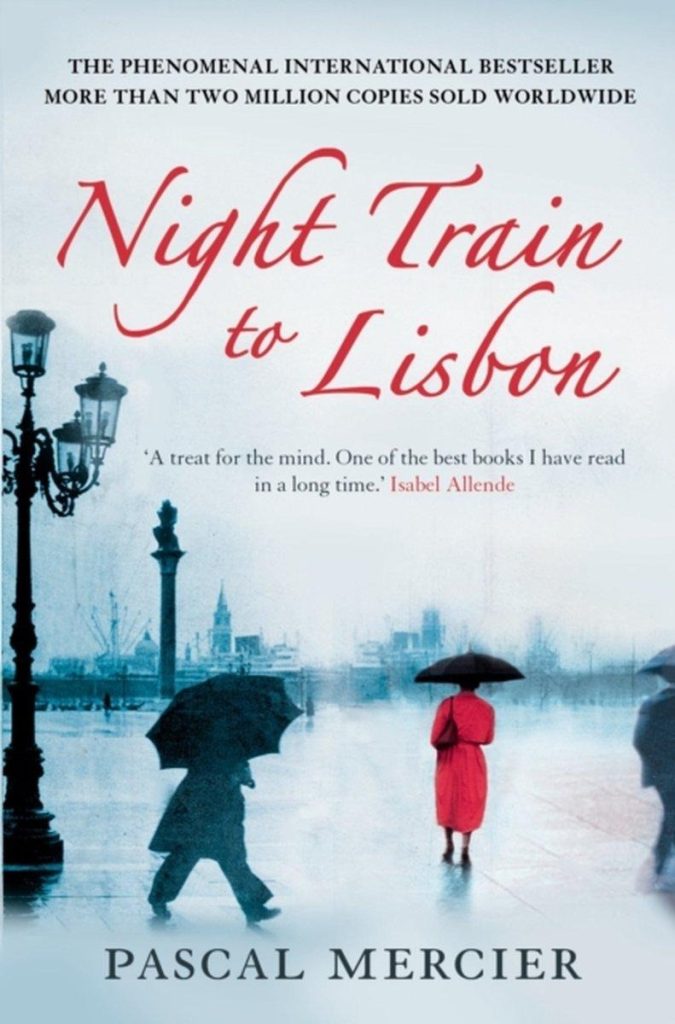
The day after which nothing in Raimund Gregorius’ life would ever be the same again began like countless other days. He left the Bundesterrasse at a quarter to eight and walked onto the Kirchenfeldbrücke, which leads from the city center to the gymnasium. He did this every working day when there was school, and it was always a quarter to eight. When the bridge was closed once, he made a mistake a little later during Greek class. That had never happened before and never happened again. For days, the whole school talked about nothing but that mistake. The longer the discussion continued, the more people became convinced that they had misunderstood the teacher. Finally, that conviction also prevailed among the students who had been there. It was simply unthinkable that Mundus, as everyone called him, would make a mistake in Greek, Latin, or Hebrew.
On the bridge, a young woman seems to want to step over the railing. He speaks to her and she goes with him to the school, attends a class, and disappears again. On the bridge, she wrote a phone number on his forehead that she wanted him to remember. He knows she is Portuguese and goes to a bookstore, where he finds a book by a Portuguese doctor, Amadeu Prado. He reads it and is so intrigued that he immediately leaves everything behind and takes the night train to Lisbon. There he arrives at Santa Apolónia station.
The novels and poetry we have discussed so far are connected to Lisbon in their origins. But how important is Lisbon to Night Train to Lisbon? This question is not so easy to answer. Gregorius has a hotel in Lisbon, walks through Lisbon and takes the ferry to the other side of the Tagus. He takes the tram, among other places to Belem.
Gregorius rode Lisbon’s hundred-year-old tram back to the Bern of his youth. The tram car, which bumped, shook, and rang its bell as it rode through the Bairro Alto, seemed in no way different from the old tram cars with which he had ridden for hours through the streets and alleys of Bern when he was still allowed to travel for free. The same kind of lacquered wooden benches, the same bell cord next to the loops dangling from the ceiling, the same metal arm that the driver used to brake and accelerate, the workings of which Gregorius understood as little now as he had then. At some point, when he was already wearing the cap of a lower secondary school student, the old trams had been replaced by new ones. They made less noise and ran much more smoothly, the other students fought to ride in the new tram, and many were late for school because they had waited for one of the new cars. Gregorius hadn’t dared to say it, but it annoyed him that the world was changing.
He learns Portuguese very quickly, although there are also moments when he doesn’t understand a word. The latter is striking, because he can read the Portuguese book quite well without any knowledge of Portuguese.
As a book lover, he naturally also goes to bookstores, where he discovers Portuguese literature.
With both books under his arm, Gregorius walked to the other side of the store, where the literature was. Luis Vaz de Camóes; Francisco de Sá de Miranda; Fer¬näo Mendes Pinto; Camilo Castelo Branco. A whole universe he had never heard of, not even from Florence. José Maria Eça de Queirós, O crime do padre Amaro. Hesitantly, as if it were something forbidden, he pulled the book from the shelf and placed it with the other two. And then suddenly he was standing in front of it: Fernando Pessoa, O livro do desassossego, The Book of Disquiet. It was incredible, really, but he had gone to Lisbon without thinking that he was going to the city of the assistant bookkeeper Bernardo Soares, who worked on Rua dos Douradores and from whom Pessoa wrote down thoughts that were lonelier than any thoughts the world had ever heard before or since.
He gets to know Lisbon through books, that much is clear.
Gregorius stayed in the antique bookshop for a long time. Getting to know a city through the books you found there – that was how he had always done it. His first trip abroad as a student had been to London. On the boat back to Calais, he had realised that during the three days, apart from the youth hostel, the British Museum and the many bookshops in the vicinity, he had seen virtually nothing of the city.
Through a series of coincidences, he uncovers the history behind the book. He discovers where Dr. Prado lived, on Rua Luz Soriano near Praça Luis de Camões, and he discovers where Dr. Prado’s close friend still works, the pharmacy on Rua dos Sapateiros, in Baixa.
And finally, he learns about the Portuguese dictatorship, although the book about it is the only one he cannot find.
But does all this make this novel a Lisbon novel? That is debatable. For example, Lisbon is not described in detail anywhere. The two streets mentioned above are only mentioned by name. No further description is given. For example, they are very narrow streets, which certainly does not quite match the impression of the doctor’s house. Gregorius stands opposite both houses, watching from a distance, which is impossible because the streets are far too narrow. But anyway, it is not so important for the story whether the description corresponds to reality.
We don’t really learn much about the Portuguese dictatorship, which plays an important role in the book. My friend Inez from Lisbon even completely disqualifies the novel on this point. The main criticism is that the dictatorship is presented primarily as a problem of the past, whereas, certainly at the time the story takes place, that was definitely not the case. That is why Saramago left Portugal, precisely at the time this novel takes place.
Lisbon is therefore not decisive as Lisbon, but as a foreign city.
Prado would sit on the steps of his school and imagine what it would have been like to lead a completely different life. Gregorius thought about the question Silveira had asked him and to which he had given the headstrong answer that he had lived the life he wanted. He noticed that the image of the doubting doctor on the mossy steps and the question of the doubting businessman on the train had triggered something in him that the safe, familiar streets of Bern could never have triggered.
Night Train to Lisbon is, after all, essentially the story of a boring 59-year-old bookseller and teacher who suddenly asks himself whether this life is indeed all there is. In Prado’s book, who is not only a doctor but also very philosophical, he reads the following:
Of the thousands of experiences we have, we mention at most one, he quoted. ‘Among all those unspoken experiences are also those hidden ones that unnoticed give our lives their shape, their color, and their melody.
He breaks free from his ironclad routine in Bern and, without a plan, goes to a strange place, Lisbon, in search of those other experiences. But Lisbon could just as well have been Tangier, or Barcelona, or Istanbul, as long as it was strange.
There comes a moment in the novel when, again on a whim, he takes the plane to Bern.
He had returned because he wanted to be back where he knew his way around. Where he didn’t have to speak Portuguese, or French, or English.
But then he discovers that he is now also alienated from Bern, and he quickly returns to Lisbon and puts the last pieces of the puzzle of Dr. Prado’s book together. This brings him some peace.
On the tram to Belém, he suddenly noticed that his feelings for the city were changing. Until now, the city had been solely the place where he conducted his investigations, and the time that had passed had been shaped by his need to find out more and more about Prado. Now, as he looked out of the tram window, the time during which the tram carriage creaked and groaned as it trundled along belonged entirely to him; it was simply the time during which Raimund Gregorius lived his new life. He saw himself standing at the tram depot in Bern again, asking about the old tram carriages. Three weeks ago, he had felt like he was riding through his childhood in Bern here in this city. Now he was riding through Lisbon and only Lisbon. He felt something deep inside him change completely.
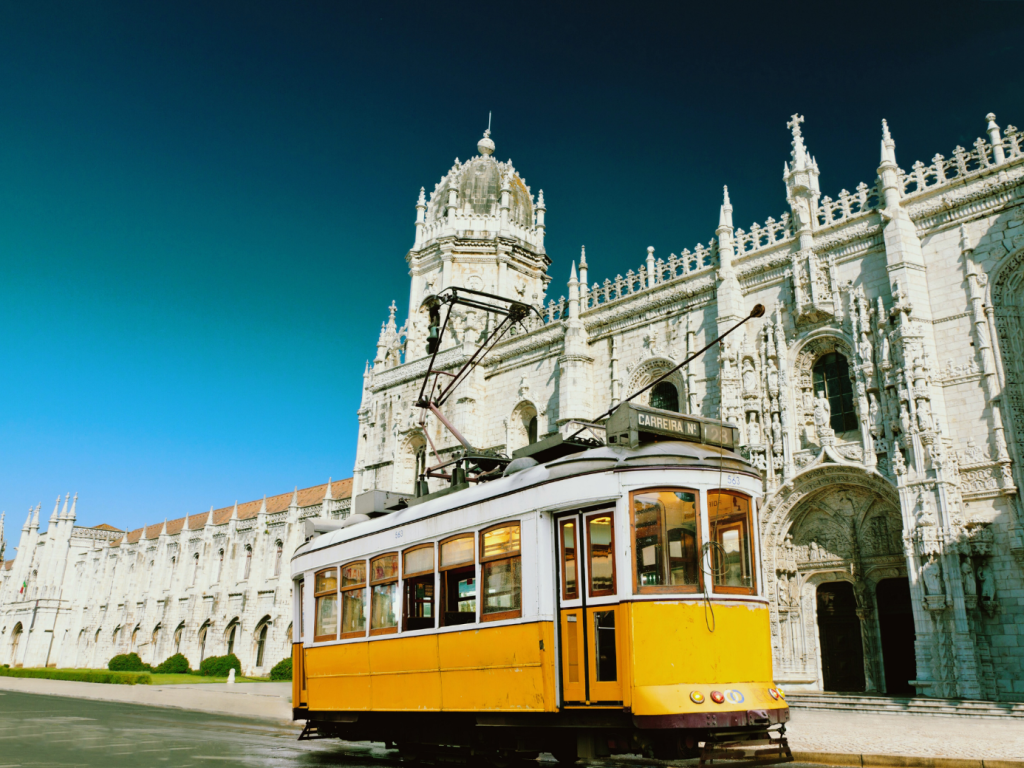
So you could say that the night train to Lisbon leads to soul-searching in Lisbon, that the novel revolves around Raimund’s soul-searching and that Lisbon functions as the strangeness that is necessary for this.
2. Erich Maria Remarque – That Night in Lisbon
What applies to Night Train to Lisbon applies even more strongly to this novel by Erich Maria Remarque. Although, the novel is set in 1942. Dictatorial Portugal was neutral to a certain extent and served as a port of departure for boats to the free world. There were many refugees in Lisbon, but also Nazi Germans and Allies. This gave Lisbon a unique position in Europe, and in that sense Lisbon is indispensable to this novel.

The main characters in the novel are a man who has two tickets for the crossing to the United States and a man who is desperately looking for tickets. They meet, and the man with the tickets says he will give them to the man without tickets if he is allowed to tell his story. That takes a whole night. The men sit in a café that is open all night and drive and walk there.
We drove around the theatrical backdrop of Praça do Comercio and a little later ended up in a maze of stairs and alleys leading upwards. I didn’t know this part of Lisbon; as always, I mainly knew the churches and museums – not because I loved God or art so much, but simply because they didn’t ask for your papers in churches and museums. To the Crucified One and the masters of art, you were still a human being—not an individual with questionable identification papers.
We got out and walked up the stairs and through the winding streets. It smelled of fish, garlic, night flowers, dead sun, and sleep. In the light of the rising moon, St. George’s Castle loomed beside us out of the night, and the light cascaded down the many steps like a waterfall. I turned and looked at the harbor. Down below lay the river, and the river was freedom, it was life, it flowed into the sea, and the sea was America.
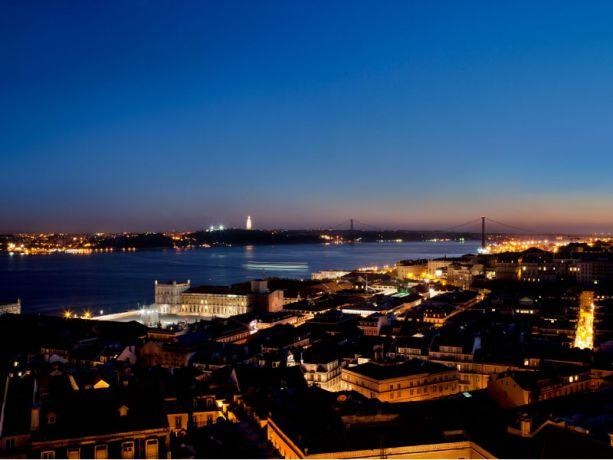
The man who sold the tickets tells how, as a person wanted by the Nazis, he tried to get his wife out of Germany. He is pursued by his wife’s brother, a fanatical Nazi. After wandering through Germany, Switzerland, and France, he manages to escape his brother and flee with his wife to Spain, then on to Portugal.
In the café where the men are sitting, there are also English and Germans, who get into an argument with each other. Halfway through the story, the men decide to go to another café.
We went outside and the night was beautiful. There were still stars in the sky, but on the horizon the sea and the morning were already in their first blue embrace; the sky had become higher and the smell of salt and blossom was stronger than before. It was going to be a clear day. During the day, Lisbon has something naive and theatrical about it that enchants and captivates you, but at night it is the fairy tale of a city that descends towards the sea in terraces with all its lights on, like a festively adorned woman bending over her dark lover.
There, the man with the tickets tells us that all this time his wife was suffering from terminal cancer. She kept it hidden from him for a long time, but in the end she had to tell him. She makes it to Lisbon, but there she dies. That is why he wants to give his tickets away to someone who needs them more; he wants to join the Foreign Legion.
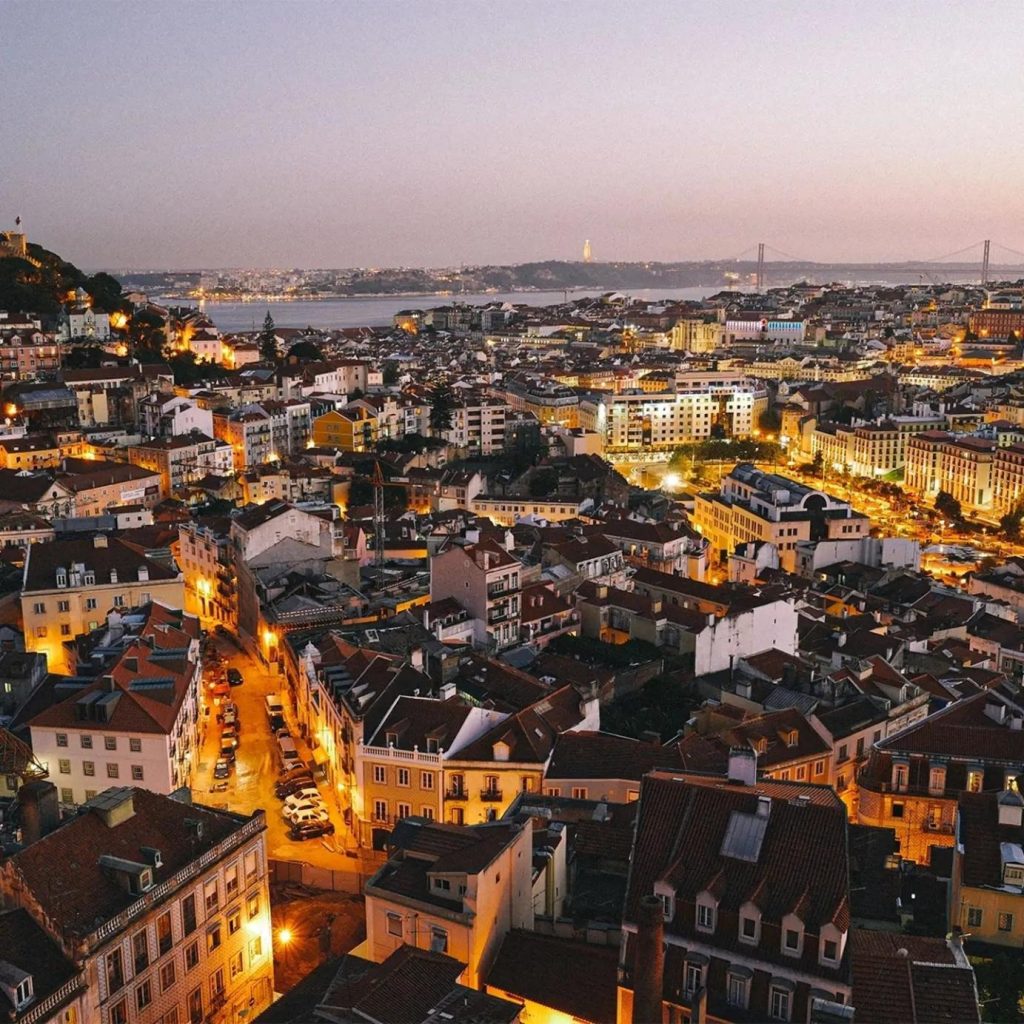
It is a poignant and sad story of escape, of which many have been told in literature. And this story takes place in Lisbon, but at the same time, the above two quotes are the only ones in which Lisbon is described. Nevertheless, with some exaggeration, these two quotes give a richer picture of Lisbon than all the quotes from Night Train to Lisbon that describe Lisbon. In that novel, Lisbon functions primarily as a symbol of strangeness. It could have been any other city. Unlike in Mercier’s story, Lisbon is necessary for Remarque’s story. In 1942, Lisbon was one of the few cities in Europe where refugees could still escape Europe. But that said, Lisbon is otherwise virtually absent from the novel.
Of course, this is a somewhat black-and-white conclusion, but not illogical in my opinion.
Arko Oderwald